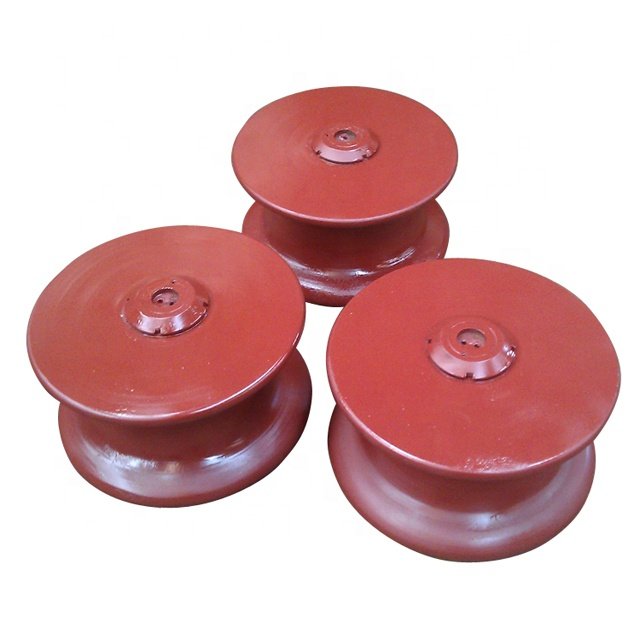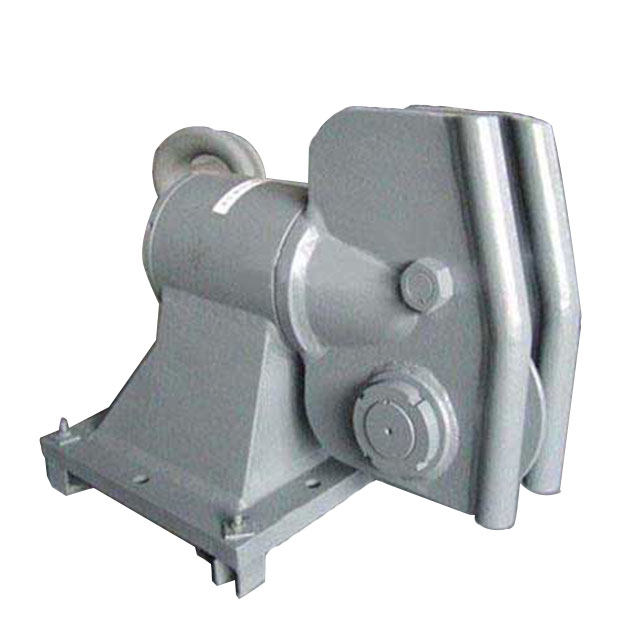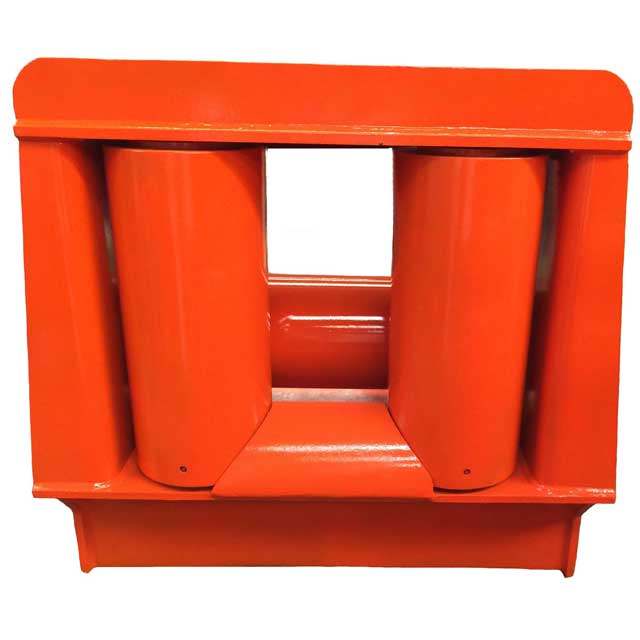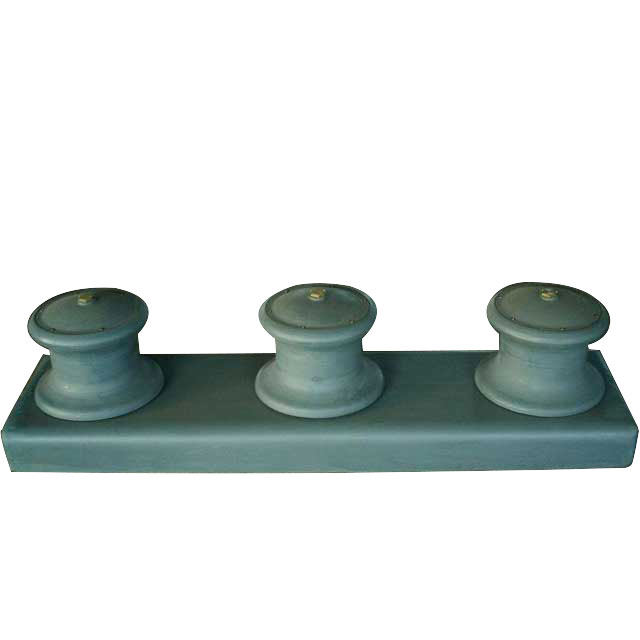Roller fairleads are mechanical devices used to smoothly guide ropes, cables, or wires around bends or corners in a range of applications such as winches, cranes, and other heavy machinery. They are designed to reduce friction and wear on ropes and cables, allowing for more efficient and safe operation.

How Roller Fairleads Work
The working of roller fairleads is the utilization of a row or circular arrangement of cylindrical rollers. These rollers are often made of metal or other durable materials and are mounted on a frame or housing.
When a rope or cable passes through the roller fairlead, the rollers freely rotate, allowing the rope or cable to run smoothly and change direction with minimal friction. The rollers are usually spaced at regular intervals to keep the rope or cable properly aligned as it passes through the fairlead. This prevents the rope or cable from rubbing against sharp edges or surfaces, which would otherwise cause abrasion and damage.
Types of Roller Fairleads
Horizontal Roller Fairleads
The rollers are positioned horizontally in a row in these basic roller fairleads. Horizontal roller fairleads are frequently used to guide ropes or cables in straight lines or over minor bends.
Vertical Roller Fairleads
The rollers in this type of fairlead are arranged vertically, often in a round or semi-circular pattern. They are most commonly used in situations when the rope or cable must reverse direction in a vertical plane, such as ship mooring or lifting.
Angle Roller Fairleads
Angle roller fairleads guide ropes and cables around corners and sharp bends. They frequently have rollers that are oriented in the same direction as the rope or cable, allowing for smooth direction changes while reducing friction and wear.
Multi-Roller Fairleads
In these fairleads, many rows of rollers, often staggered, are employed to provide additional support and stability for the rope or cable. They are commonly used in heavy-duty applications demanding heavier loads or larger ropes/cables.
Swivel Roller Fairleads
Swivel roller fairleads are designed to rotate or swivel, giving you more freedom while guiding ropes or cables in different directions. They are frequently employed in applications where the pull direction varies, such as off-road winching or marine towing.

Combination Roller Fairleads
These fairleads combine several roller configurations, such as horizontal, vertical, and angle rollers, in a single unit. They offer adaptability and flexibility in steering ropes or cables in various directions and are frequently employed in complex applications requiring multiple changes in direction.
Construction and Components of Roller Fairleads
Roller fairleads are frequently built of durable materials such as steel, stainless steel, or other corrosion-resistant materials to withstand heavy loads, harsh environments, and extensive use.
Frame or Housing
The frame or housing is the basic component of the roller fairlead that holds and supports the rollers. It is often made of a robust material that is designed to withstand the loads and stresses delivered to the fairlead.
Rollers
The cylindrical components that guide the rope or cable through the fairlead are known as rollers. Depending on the type of fairlead, they are typically formed of metal or other sturdy materials and can be positioned horizontally, vertically, or at an angle.
Roller Bearings
Roller bearings allow the rollers in fairleads with rotating or swiveling rollers to operate smoothly. They are often placed within the rollers or the frame/housing and allow the rollers to revolve or swivel.
Mounting Brackets
Mounting brackets secure the roller fairlead to the equipment or structure to which it is mounted. They are often welded or fastened to the fairlead's frame or housing and provide stability and support while in use.
Guide Plates or Flanges
Certain roller fairleads may incorporate guide plates or flanges to assist in guiding the rope or cable onto the rollers and preventing it from falling off. They are often found at the fairlead's entry and exit points and can be adjusted or secured in place.
Grease Fittings
Grease fittings or lubrication points can be installed in the fairlead to enable frequent lubrication of the rollers and bearings, resulting in smoother performance and a longer service life.
Mounting Hardware
Mounting hardware such as bolts, nuts, washers, and other fasteners are typically used to secure roller fairleads to the equipment or structure.
Protective Coatings
Roller fairleads can be covered with corrosion-resistant coatings like paint or galvanization to increase durability, particularly in maritime or other severe environments.
Labels or Markings
Roller fairleads may include labels or markings that provide critical information like as load capacity, operating directions, or safety warnings to guarantee proper and safe operation.

Best Practices For Safe Operation And Maintenance
Follow Manufacturer's Instructions
When installing, using, and maintaining roller fairleads, always follow the manufacturer's instructions. This includes proper rope or cable attachment, alignment, and tensioning, as well as regular lubrication and inspection per the manufacturer's specifications.
Inspect Regularly
Regularly inspect the roller fairlead for signs of wear, damage, or corrosion. As needed, replace or repair any loose or missing bolts, damaged rollers, bearings, or other components. Because ropes and cables are prone to wear and breakage, special attention should be taken in areas where they enter or exit the fairlead.
Lubricate as Needed
Lubrication of rollers and bearings is vital for smooth functioning and reducing friction and wear. Follow the manufacturer's lubrication type and frequency requirements, and ensure that grease fittings or lubrication points are inspected and properly greased on a regular basis.
Avoid Overloading
Do not exceed the roller fairlead's load capability as specified by the manufacturer. Overloading can result in excessive wear, damage, or failure of the fairlead, jeopardizing safety. Always use the right size and type of rope or cable for the fairlead, and make sure it's correctly tensioned and aligned.
Operate Safely
Use safe operating methods when operating equipment with roller fairleads. Avoid sudden jerks or maneuvers that place too much strain on the fairlead, rope, or cable. Allowing ropes or cables to come into contact with sharp edges or corners can cause damage and reduce their service life.

Keep Clean
Maintain a clean roller fairlead free of dirt, debris, and other contaminants that can cause friction, wear, or corrosion. Clean the fairlead on a regular basis and remove any collected debris to ensure smooth operation.
Replace Worn or Damaged Parts
As soon as feasible, replace any damaged, broken, or missing roller fairlead components. Using defective or worn components might jeopardize the safety and functionality of the fairlead, resulting in accidents or equipment failure.
Proper Training Operators
Operators should be appropriately taught and instructed on how to operate and maintain roller fairleads safely. Ascertain that operators are aware of the equipment's capabilities, limits, and safe operating procedures. Encourage operators to report any faults or abnormalities to the fairlead as soon as possible so that they can be remedied.
Follow Safety Regulations
Follow all safety rules, standards, and guidelines for the industry or application in which the roller fairlead is used. Workplace safety and health organizations' legislation, industry standards, and local legislation may all be included.
Regular Maintenance
Create and adhere to a regular maintenance schedule for the roller fairlead. Routine inspections, lubrication, cleaning, and part replacement may be provided. Regular maintenance can assist in identifying and addressing possible faults before they become serious ones, guaranteeing safe and dependable operation.